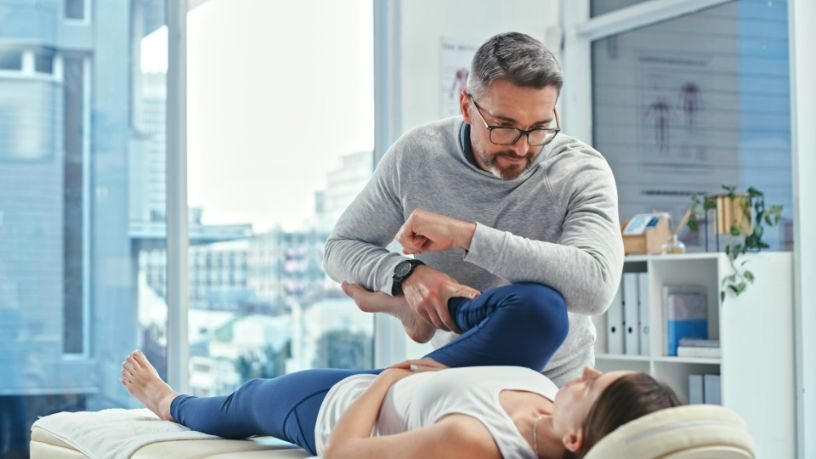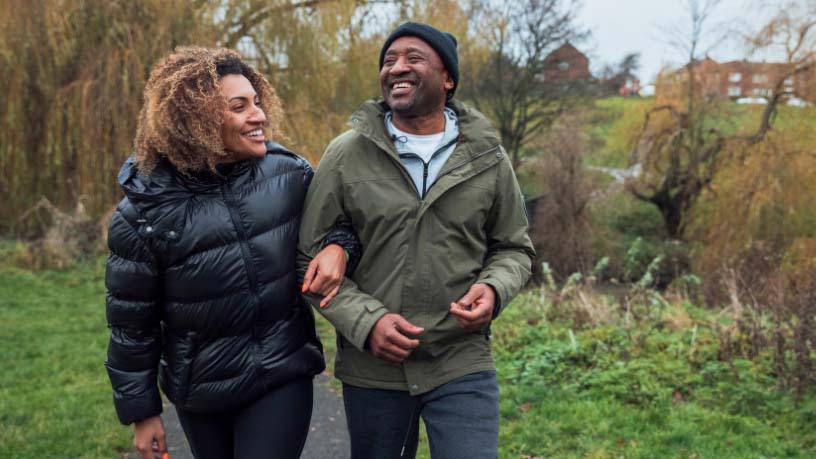There are common areas of the body that weaken after knee surgery.
On this page
Key takeaways
Strength-based exercise is important when preparing for and recovering from the operation.
Discover 5 strengthening workouts recommended by a physiotherapist.
Along with regular exercise, strength-based workouts are not-so-secret weapons to speed up your recovery from knee surgery. But which ones can help you get back to the activities you love the fastest?
Here, we look at 5 ways to strengthen key muscles and improve your range of motion, based on expert advice from Physiotherapist Dave Morarty.
Don’t forget to check in with your physio or treating team before undertaking any recovery program.
When to start exercising after knee surgery
The first thing to know about when to start exercising after knee surgery is that every person is different. The type of surgery you’ve had, you age, your level of fitness before surgery and many more factors will need to be considered before you start any form of rehabilitation or exercise.
While light movement, such as walking, may begin soon after surgery, resistance exercises will need to wait until it’s safe.
The best person to ask after how to exercise after surgery is your surgeon. They won’t only be able to say when you can start exercising but may connect with you a physiotherapist to help aid your recovery safely and prevent further injury.
Best knee strengthening exercises
Hamstring curls
The easiest way to do this exercise is on a seated leg curl machine at the gym. It helps isolate your hamstrings to build strength in the back of your thighs.
The hamstring is a hip extensor muscle that helps you push off when you’re walking or running. Hamstrings are also one of the main knee flexor muscles, which are necessary for bending your knee and improving your range of motion, a key part of recovery.
If you don’t have access to a gym you can do a variation on this exercise. Stand on one foot with your leg slightly bent, bend the other leg up so your foot touches your butt, and gently squeeze the standing leg hamstring muscle, holding onto a wall or chair for support.
Leg extensions
Leg extensions can be done in the gym are usually done with a machine that allows you to sit and raise a padded bar with your legs to work your quadriceps.
As the largest muscle group at the front of your thighs, quadriceps help keep you upright and balanced. They’re your thighs’ main antigravity muscle, and they get weaker after knee surgery. So, it’s important to strengthen your quadriceps as soon as possible.
If you don’t have access to a gym you can replicate this exercise sitting in a chair using resistance bands or a dumbbell. Ask an exercise physiologist or physiotherapist for advice about what types of resistance bands are best for you.
Leg press
This resistance training exercise engages both the quadriceps and buttocks (glutes) by pushing your legs against weights on a leg press machine in the gym.
Both of these muscles are part of the ‘antigravity chain’ which keeps you upright and propels you forward. These muscles weaken after knee surgery, so it’s important to strengthen them to get you back to the everyday activities you enjoy.
If you don’t have access to a gym you can do this exercise by laying on your back and using resistance bands around your feet to create tension as you press your feet towards the ceiling.
Bupa Health Programs
Discover our programs designed to help you recover and stay out of hospital where you can.
Wall squats
This exercise is particularly good for your quadriceps and buttocks, and you can do it anywhere.
Placing an exercise ball between yourself and a wall, simply complete a series of squats. This will help you improve your range of motion and strengthen the muscles in your antigravity chain.
You can also do this exercise without the ball. Simply slide down to a squat or seated position with your back against a wall and your knees tracking at a right angle over your ankles and hold the position for as long as you can, building up over time.
Don’t forget to engage your core while doing the squats to protect your back. And remember, don’t overdo it. Only squat to a depth that feels comfortable.
Exercise bike
Exercise bikes are a great way to work your knee joint and open it up to improve blood flow.
Because it’s not weight-bearing, riding an exercise bike is usually a pain-free option to include in your prehabilitation program where you do some strengthening work before surgery. As well as keeping everything moving, this can also relieve knee pain before surgery.
Getting the right help
While exercise can help to strengthen and work key muscles that weaken after surgery, every person’s injury, surgery and recovery is different. Safety has to come first so it’s essential that you seek professional guidance that’s unique to you and your recovery.
Speak to your surgeon and healthcare team about the type of exercise professional that might be safe for you. They will be able to recommend a rehabilitation centre, exercise physiologist or physiotherapist.
Members First Network
Resources
Musculoskeletal Health Australia provides information and support for people living with arthritis and musculoskeletal conditions. Visit their website or call them on 1800 263 265.
Pain Australia works towards improving the quality of life for those living with pain. Visit their website for resources and support, including their National Pain Services Directory.
NSW Government Health’s Patient Roadmap is a handy step-by-step guide to preparing for and recovering from surgery.
The Australian Physiotherapy Association can help you find a physio near you.

At Bupa, trust is everything
Our health and wellbeing information is regularly reviewed and maintained by a team of healthcare experts, to ensure its relevancy and accuracy. Everyone's health journey is unique and health outcomes vary from person to person.
This content is not a replacement for personalised and specific medical, healthcare, or other professional advice. If you have concerns about your health, see your doctor or other health professional.
You might also like...
What you need to know about knee replacement surgery
A knee replacement or revision can improve your mobility and quality of life, but it’s still a major surgery. So, what do you need to know about your knees?
7 things I wish I knew before knee surgery
Knee surgery is a major operation that may require months of intensive recovery. Discover 7 common insights from those who’ve done it.
What you need to know before knee reconstruction surgery
Find out everything you need to know about knee reconstruction surgery and how to set yourself up for your best possible recovery.
Knee pain: A basic guide
Your knees are the largest joints in your body. They’re also among the most accident prone. Get to know the basics of knee pain.





